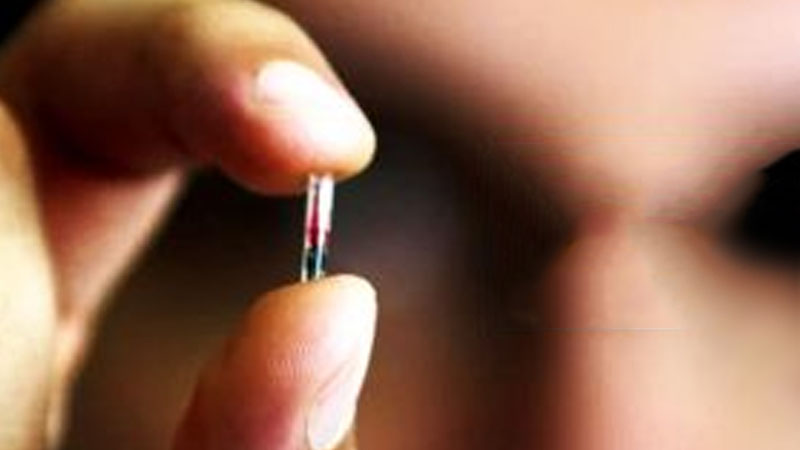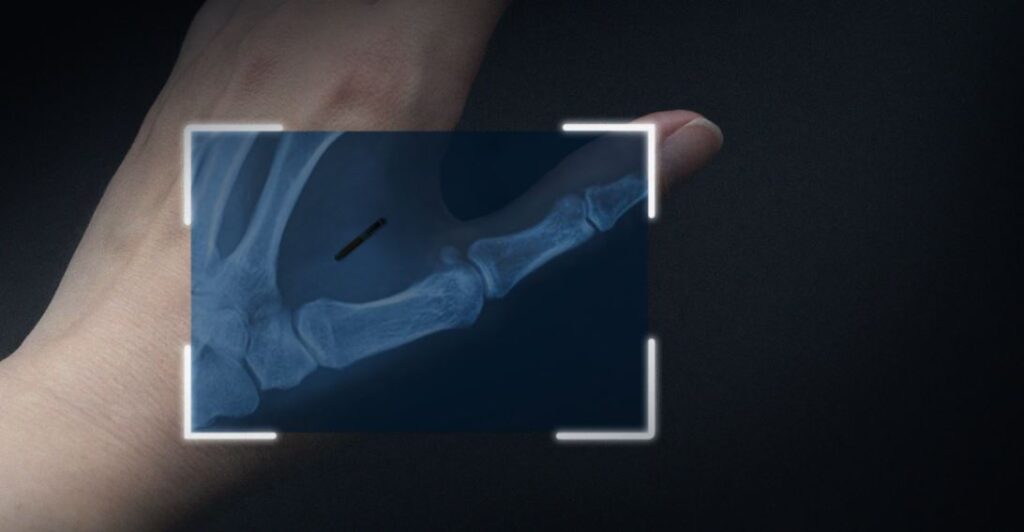In the past, cash or swipe cards were used for checkout, but in recent years, mobile phone payments have become popular. In the future, generations may no longer need to carry any tools. Just raise your hand and swipe to easily complete the payment.
Swipe? No, please extend your hand when paying
Patrick Paumen, a 37-year-old Dutch biohacker, has never taken his mobile phone, credit card or wallet with him in recent years. No matter which store he goes to shop, whenever he wants to pay, he just needs to hold up the sensor. With the left hand, the payment will be successful. This new technology might be the new era of “Internet of Things” in the following years and start a new trend in future generations.
Worried about forgetting your wallet or credit card when you go out? With a microchip in your hand, you no longer have to worry about going out and forgetting things.
Company says: Injecting microchips is easy
Baumann said he enjoys the stunned look on the store’s cashier’s face every time he makes a payment.
Looking back at 2019, he implanted an inductive payment microchip under the skin of his left hand at a cost of about £170. He described the injection as easy and simple, “like someone poking your skin lightly”.
Unhindered payment services worldwide
In 1998, Kevin Warwick, a British engineer and vice-chancellor of Coventry University, became the first human ever to have a chip implanted in his hand, but the chip only stayed on Warwick for nine days.
After that, the technology did not develop much, and it was not until recent years that the first British company Walletmor appeared, providing people with the service of implanting microchips for inductive payment, which is universal.
“The contactless payment microchip lets you buy alcohol on the beach in Rio, Brazil, coffee in New York, hair done in Paris, or something at a convenience store near you.” Founder and CEO Paprota (Wojtek Paprota): “As long as there are contactless payments (contactless payments), you can pay.”
No charging required
The inductive payment microchip sold by Paymore weighs less than 1 gram and is slightly larger than a grain of rice in appearance. become.
Paprota said that implanting the microchip is very safe, people can work immediately after implantation, and the chip will be securely embedded in the hand, without the need for batteries or charging. “We’ve sold more than 500,” Paprota said.

Familiar technology, new usage
The microchip of Alipay uses Near Field Communication (NFC), which is widely used in mobile payment on smartphones, which is full of daily life.
But getting a payment device into their hands is still a new concept for many, and perhaps a little apprehensive. In a 2021 survey of 4,000 people in the UK and EU, only 51% said they would consider implanting a chip.
Privacy and Security Concerns
This type of technology has caused people to worry that if the technology becomes more and more advanced, the microchips become more advanced, and carry more personal privacy information, will there be security concerns, and even personal whereabouts can be easily monitored?
Financial technology expert Liu Liman believes that the inductive payment microchip is actually an extension of the Internet of Things, but it also brings new disputes over the exchange of personal data. She believes that this method of payment is easier and more convenient, but people also need to weigh the pros and cons behind progress, she said: “How much are we willing to pay for convenience? How do we limit privacy and security issues? Who will maintain the program and The person who implanted the device?”
Nada Kakabadse, a professor of policy governance and ethics at the Henley Business School at Reading University in the United Kingdom, also believes that microchips need to be handled with caution. “This technology has a dark side and is likely to be abused. For people who don’t care about freedom, this technology opens up tantalizing opportunities to control, manipulate and oppress others.”

Company claims: The more you know, the less afraid you get
Baumann is optimistic about implanting microchips in humans. “When pets are lost, we can find them through pet chips, but we can’t just track the chips. We must find them physically and scan them before we know it’s our pet.”
The pet chip uses a radio frequency identification system (Radio Frequency Identification, RFID), which is commonly used in credit cards, leisure cards and pet chips. “The microchip’s reading coil has a limited distance and must be in the electromagnetic induction area, such as next to an RFID or NFC sensor, and the reader and sensor must have an inductive coupling (magnetic coupling) to activate” Baumann said.
Bauman expressed his confidence in microchips even more personally, and by 2022, he has implanted 32 microchips in his body.
Sweden uses chip to show ‘vaccination certificate’
During the COVID-19 epidemic, Swedish start-up Drsruptive Subdermals has also accelerated the promotion of microchip services, allowing people to show vaccination certificates or screening reports by induction after implanting a chip.
General manager Hannes Sjoblad said that as long as the mobile app is used, the content of the microchip can be updated, so information can be added every day, such as uploading a LinkedIn resume today, and adding a COVID-19 vaccine certificate tomorrow.
Implanting microchips has long been popular in Sweden
Jobrad explained that the implantation price is $112, and thousands of people in Sweden use the service.
Joe Brad: “If you understand how this thing works, you’ll know that it can’t transmit messages on its own, it’s basically passive. It can’t tell you where you are, and you can only see the content of the chip when it comes into contact with a smartphone, indicating that it Not as a tracker.“
Drsruptive Subdermals has developed another microchip that, when implanted, can be used to measure body temperature with a mobile phone and act as a thermometer.




